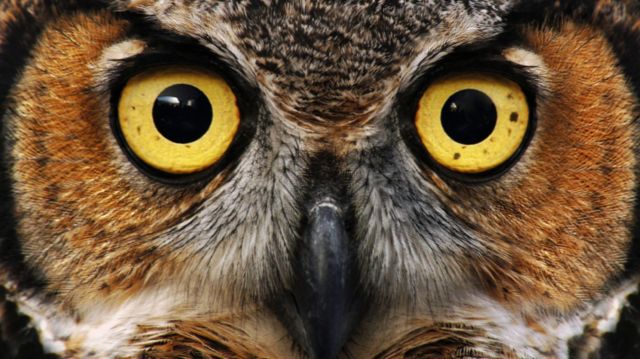Owls hunt mostly small mammals, insects, and other birds.They are found in all regions of the Earth except polar ice caps and some remote islands. A group of owls is called a "parliament."
Owls possess large, forward-facing eyes and ear-holes, a hawk-like beak, a flat face, and usually a conspicuous circle of feathers, a facial disc, around each eye. The feathers making up this disc can be adjusted to sharply focus sounds from varying distances onto the owls' asymmetrically placed ear cavities. The owl's forward-facing eyes permits the greater sense of depth perception necessary for low-light hunting. Their large eyes are fixed in their sockets so they must turn their entire heads to change views.
Owls can rotate their heads and necks as much as 270°. Owls have 14 neck vertebrae compared to seven in humans, which makes their necks more flexible. They also have adaptations to their circulatory systems, permitting rotation without cutting off blood to the brain.
Owl plumage is generally cryptic, although several species have facial and head markings, including face masks, ear tufts, and brightly coloured irises. These markings are generally more common in species inhabiting open habitats, and are thought to be used in signaling with other owls in low-light conditions.

